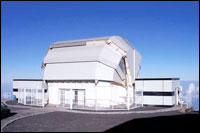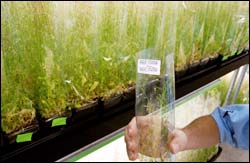
The Liverpool Telescope, the world’s largest fully robotic telescope, has snapped its first images of the heavens this week. This 2 meter optical telescope is owned by the Astrophysics Research Institute (ARI) of Liverpool John Moores University (JMU), but observes autonomously from its site on La Palma in the Canary Islands. The telescope was designed, constructed and commissioned by Telescope Technologies Ltd., a subsidiary company of JMU.
The Liverpool Telescope’s unique capabilities of

Global Cancer Alliance calls on Cancer Control community to put words into action and save millions of lives
The Alliance for Global Cancer Control issued its first public statement today, calling for the rapid implementation of the Framework Convention on Tobacco Control (FCTC). The Alliance, the first worldwide coalition addressing global cancer control, emphasised that eliminating tobacco use could prevent an estimated 30% of all cancer cases and 90% of all lung cancer cases.

A bold paper which has highly impressed some of the world´s top physicists and been published in the August issue of Foundations of Physics Letters, seems set to change the way we think about the nature of time and its relationship to motion and classical and quantum mechanics. Much to the science world´s astonishment, the work also appears to provide solutions to Zeno of Elea´s famous motion paradoxes, almost 2500 years after they were originally conceived by the ancient Greek philosopher. In doi

Since the time when humans first learned to record their thoughts in written form, codes have kept sensitive information from prying eyes. But conveying information through a code requires someone who can read it as well as write it. The same is true for one of nature´s methods for transmitting information that activates or silences a gene: the “histone code.”
First formally proposed in 2000 by C. David Allis, Ph.D., and his postdoctoral fellow Brian Strahl, Ph.D., the histone code is

Scientists have inactivated almost three-quarters of all genes in the genome of Arabidopsis thaliana, a species widely used in plant research. The feat, which results in the largest so-called “knockout” gene collection of a complex multi-cellular organism, now allows researchers to study the function of each of those genes individually or together.
The findings, published in the August 1 issue of the journal Science, mark an important milestone in the field of plant genomics. Follow

Finding will aid drug design to combat depression, stroke and diabetes. Scientists are a step closer to understanding how essential nutrients, vitamins and minerals are ferried into cells.
For the first time, a member of the Major Facilitator Superfamily (MFS) of transport proteins, found in almost every form of life, has been visualised by researchers from Imperial College London and the University of California, Los Angeles.
Reporting in Science today, the researchers reve

In case you’re scratching your head, we help break it down. Using muon spin rotation at the Swiss Muon Source SmS, researchers at PSI have discovered that a quantum phenomenon…

In the 1997 movie “Contact,” adapted from Carl Sagan’s 1985 novel, the lead character scientist Ellie Arroway (played by actor Jodi Foster) takes a space-alien-built wormhole ride to the star…

NASA’s Coronal Diagnostic Experiment (CODEX) is ready to launch to the International Space Station to reveal new details about the solar wind including its origin and its evolution. Launching in…

A research group may have unraveled the mystery behind the locomotion of the ancient marine reptile, the plesiosaur, by recreating a bio-inspired control system that accounts for motion adjustment. Extinct…

Dysferlin protein protects and shapes the membrane of heart muscle cells. Researchers from the Heart Center of the University Medical Center Göttingen (UMG) led by Priv.-Doz. Dr Sören Brandenburg have…

There is fresh momentum in our protein supply — and it’s moving along on six legs. Insects are a source of protein with a smaller resource footprint than conventional alternatives…

Thermoplastic blends, produced by a new process, have better resilience. Now, experiments at the IRIS beamline show, why: nanocrystalline layers increase their performance. Bio-based thermoplastics are produced from renewable organic…

MXene nanomaterials enable wireless charging in textiles. Researchers demonstrate printed textile-based energy grid using MXene ink. The next step for fully integrated textile-based electronics to make their way from the…

Takeout containers get your favorite noodles from the restaurant to your dining table (or couch) without incident, but they are nearly impossible to recycle if they are made from foil-lined…

Researchers are perfecting processes to grow high-quality diamond material reliably and efficiently. Researchers are developing new ideas about the best ways to make lab-grown diamonds while minimizing other forms of…

TU researchers enable better protection for sending sensitive information. In today’s digital landscape, ensuring the privacy of online communications is more critical than ever, especially in professions that rely on…

Researchers discover new magnetic and electronic properties in kagome magnet thin films. A discovery by Rice University physicists and collaborators is unlocking a new understanding of magnetism and electronic interactions…